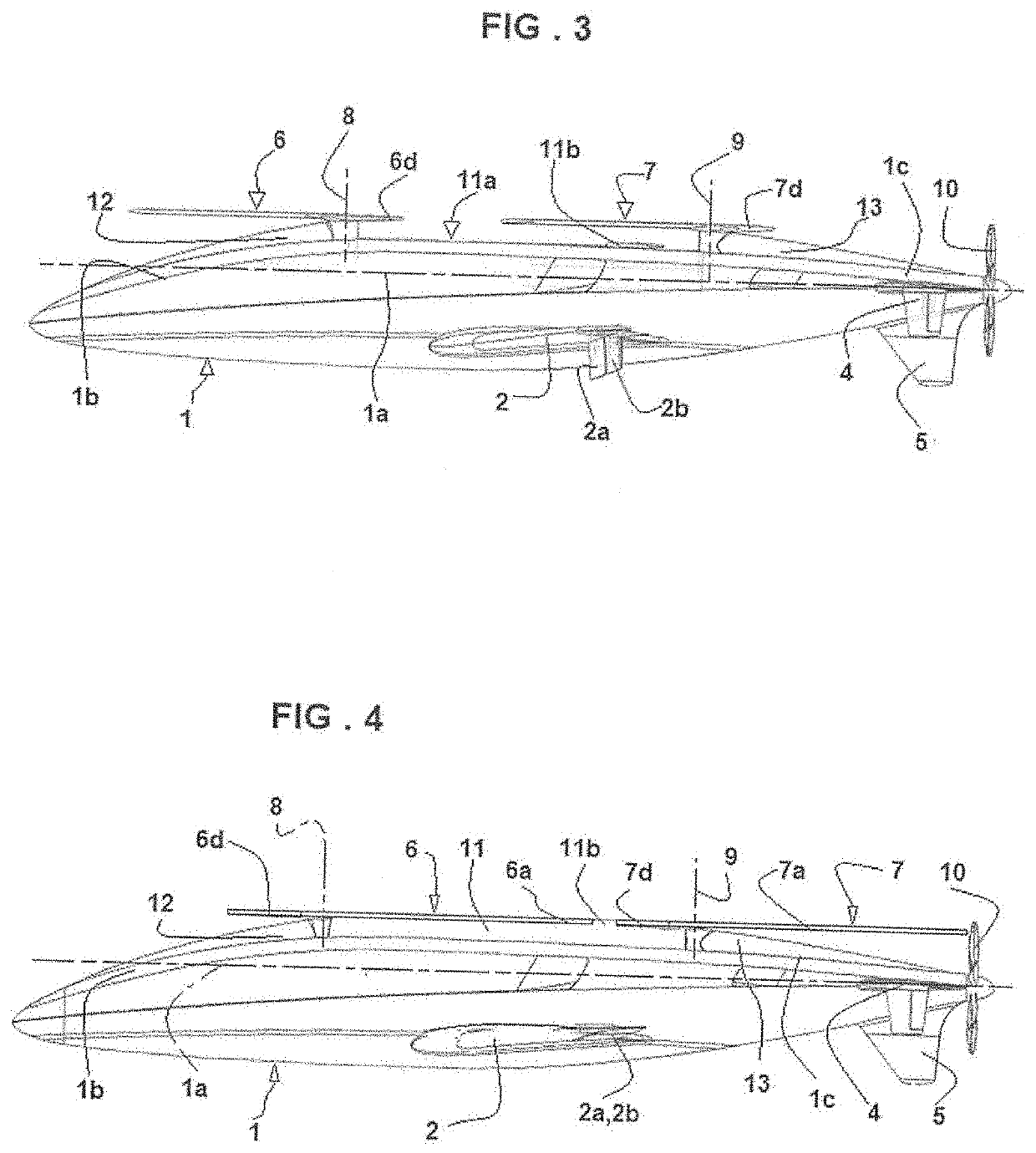Procedure for maneuvering a hybrid aerodyne of vtol or stol
a hybrid aerodyne and aerodyne technology, applied in the direction of vertical landing/take-off aircraft, process and machine control, instruments, etc., can solve the problems of aerodynamic instability, no such system has been genuinely developed and commercialized, and the mechanisms that have been proposed are too complex, etc., to achieve sufficient lift and shorten the rigidity
- Summary
- Abstract
- Description
- Claims
- Application Information
AI Technical Summary
Benefits of technology
Problems solved by technology
Method used
Image
Examples
Embodiment Construction
[0042]The aerodyne shown in the figures comprises a fuselage 1 with its roll axis referenced 1a. The fuselage is fitted with a fixed wing comprising main wings 2 and 3, an upside-down U-shaped tail 4, and a tail fin 5, in conventional manner well-known to the person skilled in the art. It should be observed that the wings 2 and 3 possess respective control surfaces 2a, 1b and 3a, 3b shown extending down in FIGS. 1 and 3 and in service in FIGS. 2 and 4. In known manner, the horizontal branches of the tail also include control surfaces 4a. In the embodiment shown in the figures, the aerodyne of the invention has a front single-blade 6 and a rear single-blade 7. The front single-blade 6 has an active blade 6a that generates lift while it is rotating. This single-blade is made up both of a first portion 6b that carries said active blade and that constitutes the connection between the active blade and a rotor mast 8, and also of a second portion 6c that carries the counterweight 6d and t...
PUM
 Login to View More
Login to View More Abstract
Description
Claims
Application Information
 Login to View More
Login to View More - R&D
- Intellectual Property
- Life Sciences
- Materials
- Tech Scout
- Unparalleled Data Quality
- Higher Quality Content
- 60% Fewer Hallucinations
Browse by: Latest US Patents, China's latest patents, Technical Efficacy Thesaurus, Application Domain, Technology Topic, Popular Technical Reports.
© 2025 PatSnap. All rights reserved.Legal|Privacy policy|Modern Slavery Act Transparency Statement|Sitemap|About US| Contact US: help@patsnap.com


